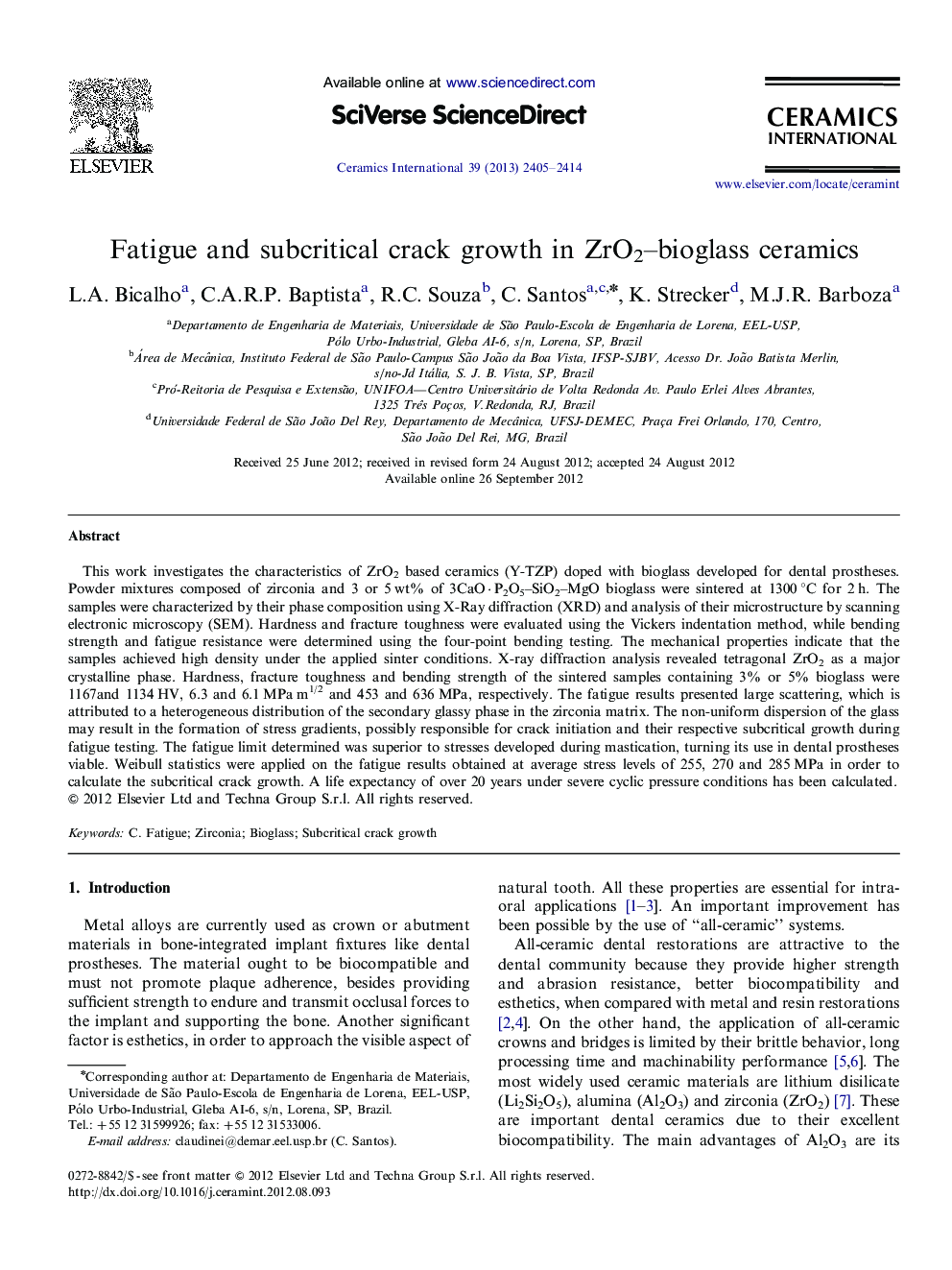| Article ID | Journal | Published Year | Pages | File Type |
|---|---|---|---|---|
| 10626073 | Ceramics International | 2013 | 10 Pages |
Abstract
This work investigates the characteristics of ZrO2 based ceramics (Y-TZP) doped with bioglass developed for dental prostheses. Powder mixtures composed of zirconia and 3 or 5 wt% of 3CaO·P2O5-SiO2-MgO bioglass were sintered at 1300 °C for 2 h. The samples were characterized by their phase composition using X-Ray diffraction (XRD) and analysis of their microstructure by scanning electronic microscopy (SEM). Hardness and fracture toughness were evaluated using the Vickers indentation method, while bending strength and fatigue resistance were determined using the four-point bending testing. The mechanical properties indicate that the samples achieved high density under the applied sinter conditions. X-ray diffraction analysis revealed tetragonal ZrO2 as a major crystalline phase. Hardness, fracture toughness and bending strength of the sintered samples containing 3% or 5% bioglass were 1167and 1134 HV, 6.3 and 6.1 MPa m1/2 and 453 and 636 MPa, respectively. The fatigue results presented large scattering, which is attributed to a heterogeneous distribution of the secondary glassy phase in the zirconia matrix. The non-uniform dispersion of the glass may result in the formation of stress gradients, possibly responsible for crack initiation and their respective subcritical growth during fatigue testing. The fatigue limit determined was superior to stresses developed during mastication, turning its use in dental prostheses viable. Weibull statistics were applied on the fatigue results obtained at average stress levels of 255, 270 and 285 MPa in order to calculate the subcritical crack growth. A life expectancy of over 20 years under severe cyclic pressure conditions has been calculated.
Related Topics
Physical Sciences and Engineering
Materials Science
Ceramics and Composites
Authors
L.A. Bicalho, C.A.R.P. Baptista, R.C. Souza, C. Santos, K. Strecker, M.J.R. Barboza,
